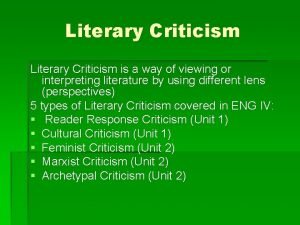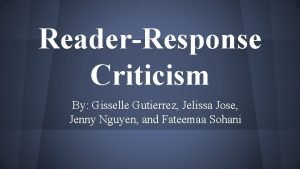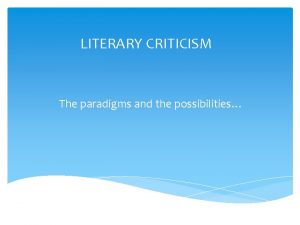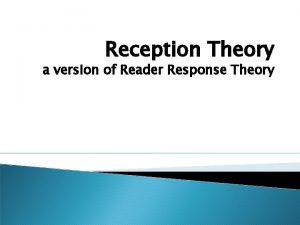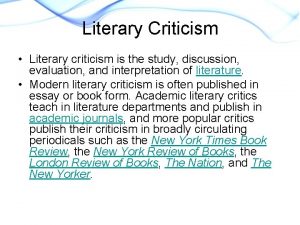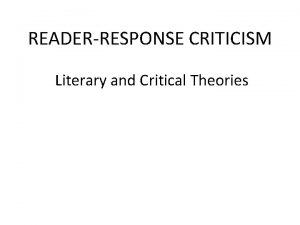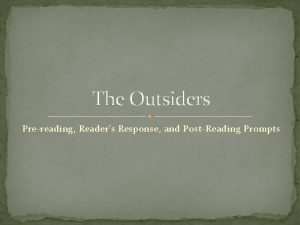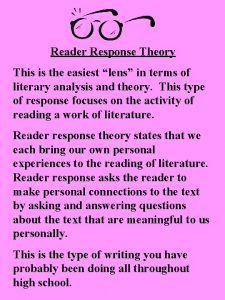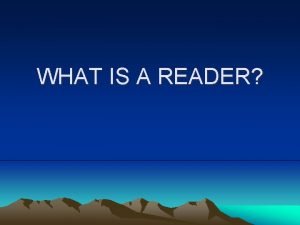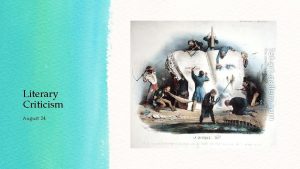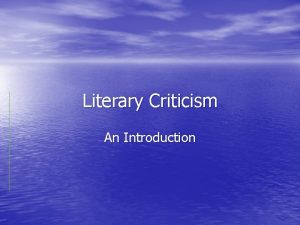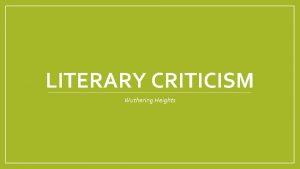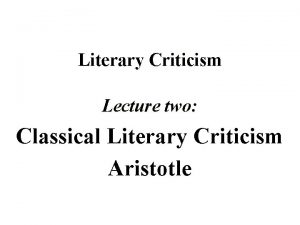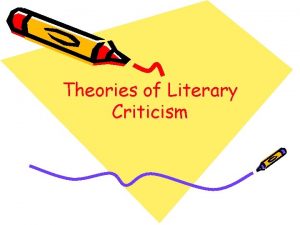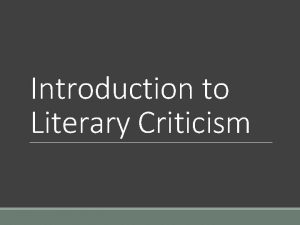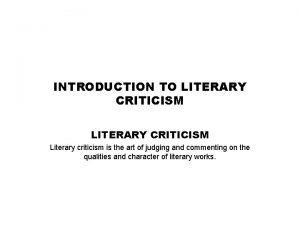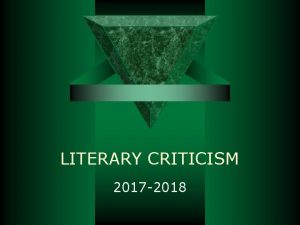Reader Response Literary Criticism 1 ST Literary Criticism











- Slides: 11

Reader Response Literary Criticism 1 ST Literary Criticism

Literary Criticisms “The analysis of a literary text through various lenses that highlight authorial stance, purpose and perspective. ” Can we unpack this definition. What does it mean?

Being Critical “A critical viewpoint is simply a lens through which we look at a piece of literature, allowing this lens to shape our reaction to the work. ” So how will our ‘reactions’ be different? What type of reactions will we have? AND Will we agree with our reactions? In other words will/ought our reactions challenge pre-conceived notions we have had?

Unconscious Bias • Many of us (all of us) have an unconscious bias. What is an unconscious bias? How can we recognize and deal with it? Go to our website and visit the link there to read about unconscious bias. Discuss with your groups after reading: - What is unconscious bias? - What is one thing people might be bias about? - In what situation might it arise? - How can we prevent being unconsciously bias?

Perceivers • A text cannot be understood apart from its “results” – Tompinks, 1980 What do you think Tompkins means by effects? Effects meaning psychological and otherwise on the reader themselves gives meaning to the text. This means there is no meaning to the text without the reader (perceiver)

Reader Response Literary Criticism • “At its most basic level, reader – response criticism considers readers’ reactions to literature as vital to interpreting the meaning of the text. ” (Owl@Purdue)

Why Its #1 A critic deploying reader – response theory can use a psychoanalytic, feminist or structural lens when analyzing literature, so long as they themselves are involved in the meaning of the text. “ ” (Tyson 154)

2 Beliefs 1. The role of the reader cannot be omitted from our understanding of the literature 2. Readers do not passively consume the meaning presented to them by an objective literary text; rather they actively make the meaning from reading the text

Evaluating Literature • As a reader you can ask questions of the literature and of yourself when reviewing it. Some INITIAL questions include: 1. Did you like or dislike the text? Why? 2. Do you agree or disagree with the author’s position? 3. What was the purpose of the text? 4. Was the text well – written?

Analysis Questions • What does the text have to do with you personally? How can you connect with it? Past, Present, Future? • How much does the text agree or disagree with your view of the world and what you consider to be right or wrong? • What did you learn? How much of your own viewpoints were challenged in the text? • How well does the text address things that you personally care about and think are important? • What can you praise about the text? What problems are with it? • How well did you enjoy the text, as entertainment or a work of art?

Writing an Analysis • A reader response essay analysis is like a formal essay that you have been taught before, but in it you are more free to write your opinion and ideas; you may in this case use the word “I” in your essay, though I do not think you need to.
